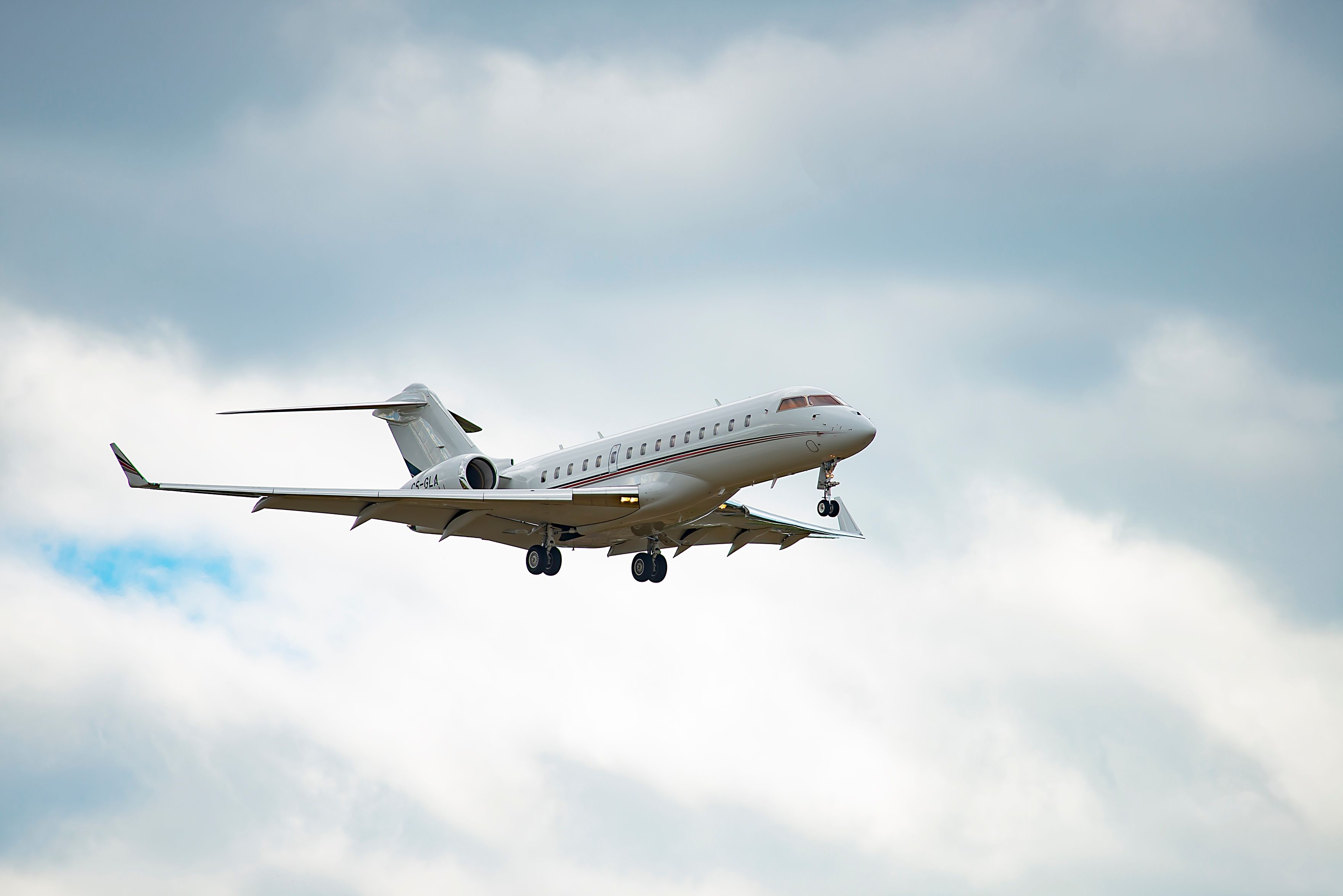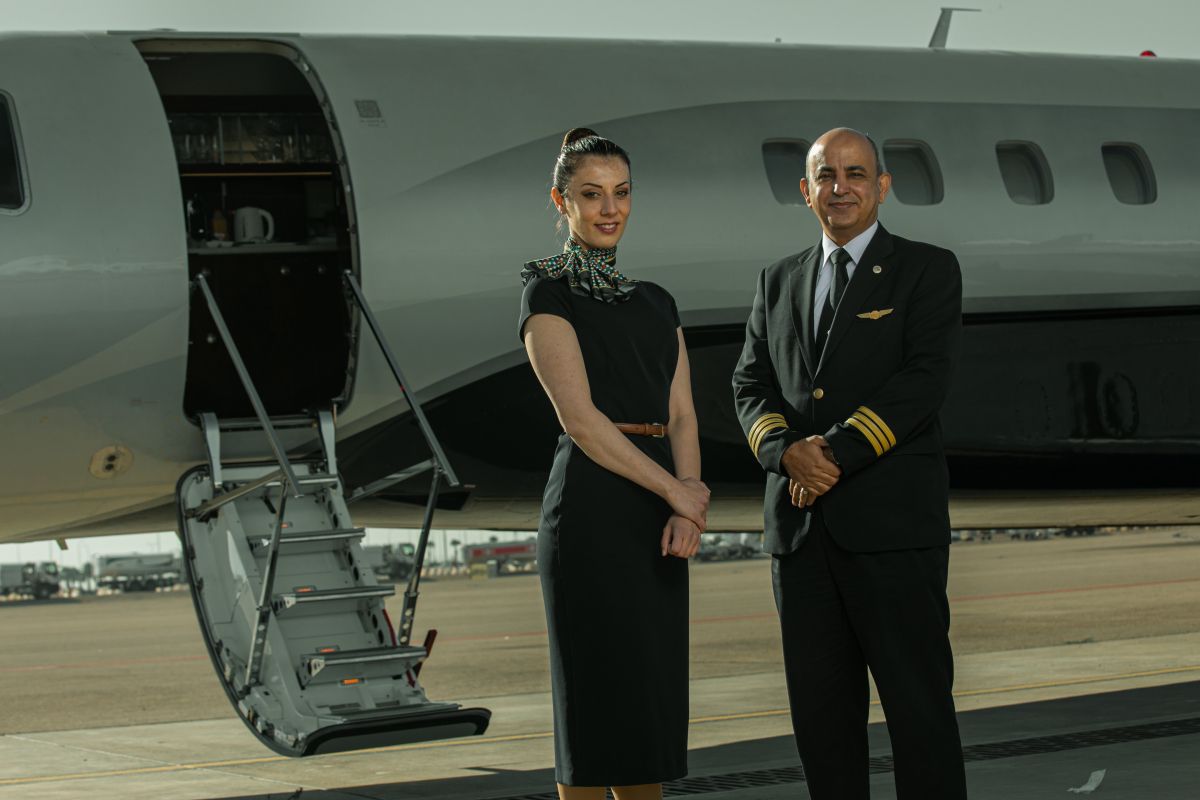Summary
- Private jets have different cabin crew requirements based on aircraft size and certification.
- FAA & EASA guidelines for private aviation differ from commercial aviation in terms of cabin crew.
- Commercial flights have set regulations for the number of cabin crew per passengers, while private jets vary based on operator needs.
Cabin crew are essential, not just for inflight service but for safety onboard the aircraft. The private jet industry has slightly different requirements to that of commercial aviation. Let’s compare and contrast how many cabin crew are needed on a large private jet.
The definition
Firstly, we have to define what a large private jet is, as it can be very variable. An ultra long range jet with 14 seats, would come into this category. Aircraft such as the Bombardier Global 7500 or the Gulfstream G650 allow for up to 17 hours non-stop flying, making a trip from New York to Tokyo possible, for example. These aircraft are popular because the cabin can be separated into different areas for eating, sleeping and business.
Larger jet types
Other aircraft types such as the Boeing Business Jet (BBJ) or the Airbus Corporate Jet (ACJ) are also classed as large cabin private jets and are configured on what the owner or operator needs. Therefore, an ACJ 318 may have just 19 VIP seats and a comparable sized BBJ 737 may have 50 business class seats and still be classed as a private jet.
Photo: NASJET
Differences in rules
The Federal Aviation Administration (FAA) and the European Union Aviation Safety Agency (EASA) tend to follow the same guidelines. In private aviation under their rulings, it is not essential to have a trained flight attendant on an aircraft with 19 seats or under. Therefore, not all private jets have flight attendants onboard.
Saying that, a Boeing 737 or Airbus A318 with 19 seats will be more regulated. EASA suggests that the number of cabin crew is based on the certification process of the aircraft. The FAA says that the number of cabin crew depends on the aircraft size and weight and capacity for passengers.

Among The World’s Fastest Private Jets: A Guide To Bombardier’s Global Family
This series of long-range business jets comprises several different variants.
How many commercial cabin crew?
In commercial aviation, the general rule of thumb is that for every 50 passengers, there should be one cabin crew member in order to safely evacuate the aircraft. The FAA states that an aircraft with a maximum payload capacity of more than 7,500 pounds and a capacity for seating nine to 51 passengers requires one cabin crew.
Two cabin crew are required with 51–100 passengers and one additional cabin crew member for each unit of 50 seats. On a turboprop aircraft like the ATR 72, with 69 seats, it would require two cabin crew. An Airbus A380, with 500 seats, would require a minimum of ten cabin crew based on this.
Photo: Etihad
On private jets?
In private aviation, on smaller aircraft like the Embraer Legacy 600, only one cabin crew will be carried, member, and usually they may or may not be a trained flight attendant. On aircraft like the Global 7500 or Gulfstream G550, there will usually be one cabin crew but sometimes two, if needed for service. It also depends on how many jump seats are available as, in general, passengers don’t want cabin crew sitting in the cabin.
Photo: Hong Kong Jet
On a private Airbus A318 or an Embraer Lineage 1000, two cabin crew will be carried normally, based on the above rules and have 19 seats. It also depends on the type of operation and service onboard. A large Boeing 777 converted to a business jet could have 12 cabin crew onboard, but also could carry extra staff such as a flight engineer, doctor, chef and mixologist.
In commercial aviation, the number of cabin crew is pretty clear and operators of large private jets like BBJs and ACJs will follow the one cabin crew per 50 passenger or seat rule. In other private jets, it depends on the operator and the client’s requirements.







